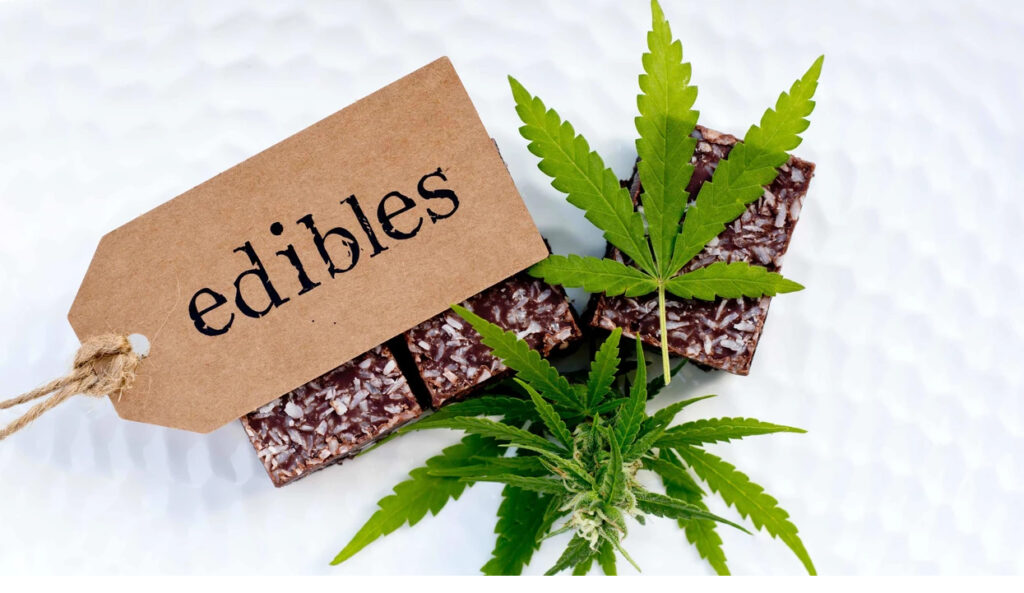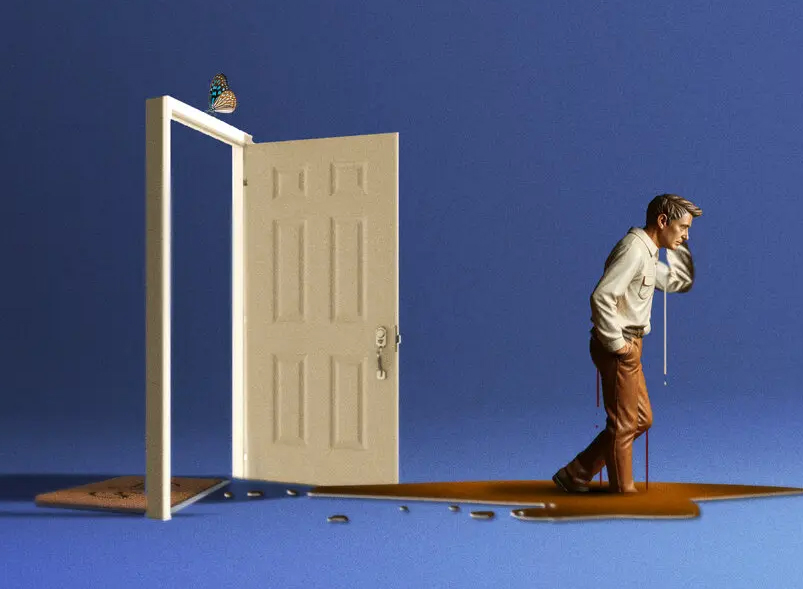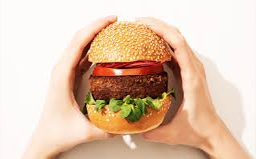Despite their appearance, cannabis edibles — sweet treats like gummies and chocolate bars infused with tetrahydrocannabinol (THC), the primary psychoactive component of marijuana — can be risky for some users.
They may look just like candy, but these potent products definitely aren’t for kids. And that’s part of the problem.
In a new article appearing in the Canadian Medical Association Journal, researchers outlined the most prominent risks associated with cannabis edibles for different users and found that young people are among the most at-risk when it comes to overconsumption and accidental ingestion.

The other most at risk: older adults.
And for those two groups, there are some serious potential adverse health problems that can sometimes result in a trip to the emergency room or just a really, really bad day.
In places where marijuana is legal recreationally and there’s data available, cannabis edibles still remain just a small part of the overall industry. However, in some cases, as in Colorado, they’ve put a disproportionate number of people in the hospital.
There are specific reasons for that, some of which are owed to the difference in how the body processes cannabis based on how it’s consumed.
How cannabis edibles affect you differently
It’s well established that cannabis edibles take significantly longer than inhaled marijuana to enter the bloodstream.
Smoking results in a near instantaneous onset, whereas consuming cannabis commonly takes between 30 to 60 minutes. But that can vary depending on many different factors including the user’s metabolism and the contents of the edible itself.
“Overconsumption is a significant concern because of the delayed time to onset of its intended effects. Unlike inhaled cannabis, ingested cannabis must be digested first before being absorbed, and once it has been ingested, it’s on board, which means people might not feel effects immediately and hence inadvertently overconsume,” said Dr. Lawrence Loh, MPH, an author of the research and faculty member at the University of Toronto.
Other significant factors in determining how quickly an edible could kick in include: sex, weight, diet, and tolerance to cannabis.
The effects of marijuana edibles also last a lot longer than smoking, with peak THC blood levels Trusted Source occurring around 3 hours after consumption.
The latency of the high from edibles can frequently result in an all-too-common scenario for some users: eating the edible, not feeling the effects immediately, and then consuming more.
By the time the effects are felt, the user could be in over their head.
Health risks of cannabis overconsumption
There’s the potential for cannabis-induced psychosis, which results in paranoia, confusion, and hallucinations.
Particularly in older adults, cannabis can also result in cardiac events.
Last year, the Canadian Journal of Cardiology published a case report on a 70-year-old man who had a heart attack after ingesting a cannabis lollipop.
Cannabis is known to affect the cardiovascular system and can cause an increase in heart rate and blood pressure.
Previous research Trusted Source has shown a higher risk of heart attack following the use of cannabis.
But overconsumption also presents specific risks for different age groups, as outlined in the new Canadian report.
For youths, the risks outlined include panic attacks, psychosis, and hyperemesis syndrome — a serious condition that results in uncontrollable vomiting.
There are also potential long-term effects from cannabis consumption beginning at a young age, including “impaired brain development and poor mental health.”
Older adults, the other at-risk group outlined in the report, may experience increased cognitive impairment, risk of falls, heart arrhythmia, and various drug interactions.
According to Loh, these two groups are at higher risk because, “[They] have different metabolic rates and pharmacokinetics than other groups and hence respond differently… For seniors, many may have other conditions that might place them at risk of overconsumption and other indirectly related health issues.”
Rais Vohra, the Medical Director for California Poison Control System Fresno Madera District, told Healthline that his experience in dealing with emergencies associated with cannabis edibles are consistent with findings in the report.
He emphasized how important it is to keep these products out of the hands of children in order to avoid accidental exposure.
“What we really try to repeat over and over again is that kids and cannabis don’t mix. We really should be treating these edibles like we do alcoholic beverages and prescription medications and really trying to keep them out of the hands of toddlers and children who can accidentally ingest them,” he said.
And prevention is the best measure because when it comes to treating cannabis overconsumption, there are few options besides just riding it out.
What’s the best way to treat marijuana toxicity?
“There’s really no antidote to marijuana toxicity. So, whenever somebody is having these effects of marijuana intoxication you really have to just give them supportive care and let time do its thing,” said Vohra.
“As their body metabolizes the cannabis they will become normal again. It may take a day or two and in the meantime they may require intensive supportive care,” he added.
Vohra said that when it comes to marijuana overconsumption he commonly recommends “home observation,” meaning a trip to the ER probably isn’t necessary.
However, for some extreme cases — particularly in young children and infants — a visit to the hospital is a good idea.
Good regulation of cannabis edibles is the first step in making sure no one ever ends up in the ER because of them.
In Canada, these regulations demand that edibles are stored in plain, child-resistant packaging and require a standardized health warning sign on them.
“Common sense and best business practices dictate that in a legally regulated adult-use market, cannabis-infused edible products ought to be readily distinguishable from non-infused products by their packaging. Moreover, such products ought to be properly and accurately labeled for potency and cannabinoid content and served in childproof packaging,” said Paul Armentano, the Deputy Director of the National Organization for the Reform of Marijuana Laws (NORML).
Armentano was not affiliated with the report.
The report also calls for more widespread community-based education around edible cannabis and encourages physicians to more openly discuss marijuana usage with their patients.
“I think that any step that we add to ensure safety, they all synergize. At the community level people just need education and reminders in many different forms that these products can be hazardous,” said Vohra.
Why More People Are Going to the ER After Eating Cannabis Products
Marijuana edibles — chocolates, gummies, and other culinary treats laced with tetrahydrocannabinol (THC) — are a relatively small part of the legal marijuana (cannabis) industry in Colorado.
Yet they’ve been putting a disproportionate number of people in the hospital.
According to a new studyTrusted Source recently published in the journal Annals of Internal Medicine, Colorado saw a threefold increase in the number of people admitted to hospital emergency rooms that were attributable to cannabis between 2012 and 2016.
While a number of those cases were linked to inhaled cannabis, edibles played a significant role.
Cannabis edibles only comprise a small number of total cannabis sales, less than 1 percent based on THC content, and only 3.6 percent of marijuana users reported using edibles.
Despite their small market share, cannabis edibles resulted in nearly 11 percent of all cannabis-attributed emergency room visits.
Even more alarming, of the three deaths associated with cannabis products in Colorado, all involved edibles.
Andrew A. Monte, PhD, an associate professor of emergency medicine and medical toxicology at the University of Colorado in Denver, who authored the study, said he wasn’t surprised by the findings.
“This finally puts some data behind the observations that doctors have been seeing for years,” he told Healthline.
Ruben Baler, PhD, a health scientist administrator at the National Institute on Drug Abuse, who wrote an accompanying editorialTrusted Source for the study, shares that sentiment.
“There have been inklings that different routes of administration would have different outcomes. There were preliminary results from emergency departments and poison centers already hinted at the differences. This clearly shows the differential risks of toxic adverse effects,” Baler said.
Different “route of exposure,” different risks
The study is the first to dive deep into adverse health outcomes from cannabis based on “route of exposure” — how the drug is consumed.
Cannabis is most commonly smoked, but it can be administered in other ways as well, including being eaten.
The drug’s effects on the body, it’s uptake (how long it takes to feel the effects), and duration are all affected by route of administration.
There were stark differences in emergency room patients’ symptoms based on whether they’d eaten or smoked cannabis. Edibles were more likely to induce acute psychiatric events, such as anxiety or panic attacks.
The most frequent reason for smoked cannabis to put users in the emergency room: cannabinoid hyperemesis syndrome, which results in repeated or cyclic vomiting that’s difficult to treat.
The study’s authors say that while smoked cannabis puts more people in emergency rooms in total, it’s clear that cannabis edibles are more likely to produce adverse health outcomes.
“There are more adverse drug events associated on a milligram per milligram basis of THC when it comes in form of edibles versus an inhaled cannabis,” Monte said. “If 1,000 people smoked pot and 1,000 people at the same dose in an edible, then more people would have more adverse drug events from edible cannabis.”
The question of why edibles have a disproportionately high number of these outcomes isn’t clear from the report.
It’s not uncommon to hear stories of users taking doses that are far too high or unintentionally taking too many doses at once.
“This may be because people who are impacted by the edible’s toxicity are naive users that haven’t had the experience before,” Baler said.
When eaten, cannabis takes a much longer time to kick in, and the high lasts longer. When marijuana is smoked, effects are noticeable almost immediately, with peak blood concentrations generally occurring within an hour. The high can last for a few hours.
Cannabis edibles can take an hour or more before any effects are noticed. The high lasts significantly longer — up to 12 hours. The delayed effects of cannabis edibles can lead to users eating more than they should.
Paul Armentano, the deputy director of the National Organization for the Reform of Marijuana Laws, told Healthline that eating THC products has a wider range of effects on people than smoking or vaping it.
He said the effects of the drug can also last longer and there’s a greater potential for a more dysphoric effect when it’s consumed in an edible form.
“This is because the body metabolizes THC in a fundamentally different manner following oral administration than it does following inhalation,” he said.
Understanding potential dangers
The study is the latest to scrutinize the harmful effects of cannabis edibles.
Last month, the Canadian Journal of Cardiology published a case report on a 70-year-old man who had a heart attack after ingesting a cannabis lollipop.
Cannabis affects the cardiovascular system and can cause an increase in heart rate and blood pressure. Previous research has noted an increased risk of heart attack following the use of cannabis.
Monte’s work is an important step toward understanding and acknowledging that cannabis consumed in different forms can lead to different yet serious adverse health outcomes.
What’s clear is that the public needs to be better informed about the effects and potency of edible cannabis.
“There needs to be greater awareness among both the consumer and the seller with regard to the fact that the route of administration plays a significant role in the duration and degree of drug effect,” Armentano said.
“The landscape has changed dramatically,” Baler said, noting that cannabis is much more potent today than it was in the past.
He also pointed out that with liberalization of marijuana laws there’s been a decreased perception of harm.
Despite the findings of his research, Monte doesn’t want his work to be sensationalized.
“These emergency department visits should not be overstated. Our emergency department isn’t being overwhelmed with these visits. We see approximately 300 cases per day in our emergency department and really only one of those will be what we consider a ‘cannabist-attributable’ visit. So, this is a really small percentage of the people we are seeing. Many people use cannabis safely without any adverse drug events,” he told Healthline.
While cannabis is used safely by many individuals, surveillance of adverse health outcomes is an important step for public health officials.
And for individuals curious about cannabis edibles: take care.
“Even low doses can cause adverse drug events,” said Monte.


